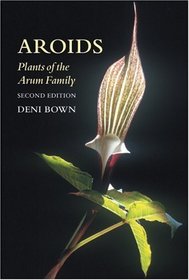Search -
Aroids: Plants of the Arum Family
Aroids Plants of the Arum Family
Author:
Originally published in 1988 as the first truly comprehensive review of one of the largest and most popular plant families, Aroids: Plants of the Arum Family was enthusiastically welcomed by botanists and horticulturists alike for its attention to scientific detail and delightful writing style. Now in this completely updated second edition, we l... more »
Author:
Originally published in 1988 as the first truly comprehensive review of one of the largest and most popular plant families, Aroids: Plants of the Arum Family was enthusiastically welcomed by botanists and horticulturists alike for its attention to scientific detail and delightful writing style. Now in this completely updated second edition, we l... more »
ISBN-13: 9780881924855
ISBN-10: 0881924857
Publication Date: 9/1/2000
Pages: 392
Rating: ?
ISBN-10: 0881924857
Publication Date: 9/1/2000
Pages: 392
Rating: ?
0 stars, based on 0 rating
Publisher: Timber Press (OR)
Book Type: Hardcover
Other Versions: Paperback
Members Wishing: 1
Reviews: Amazon | Write a Review
Book Type: Hardcover
Other Versions: Paperback
Members Wishing: 1
Reviews: Amazon | Write a Review
Genres:
- Crafts, Hobbies & Home >> Gardening & Landscape Design >> General
- Science & Math >> Biological Sciences >> Botany
- Science & Math >> Biological Sciences >> Ecology
- Engineering & Transportation >> Professional Science >> Biological Sciences >> Botany
- Engineering & Transportation >> Professional Science >> Biological Sciences >> Ecology




